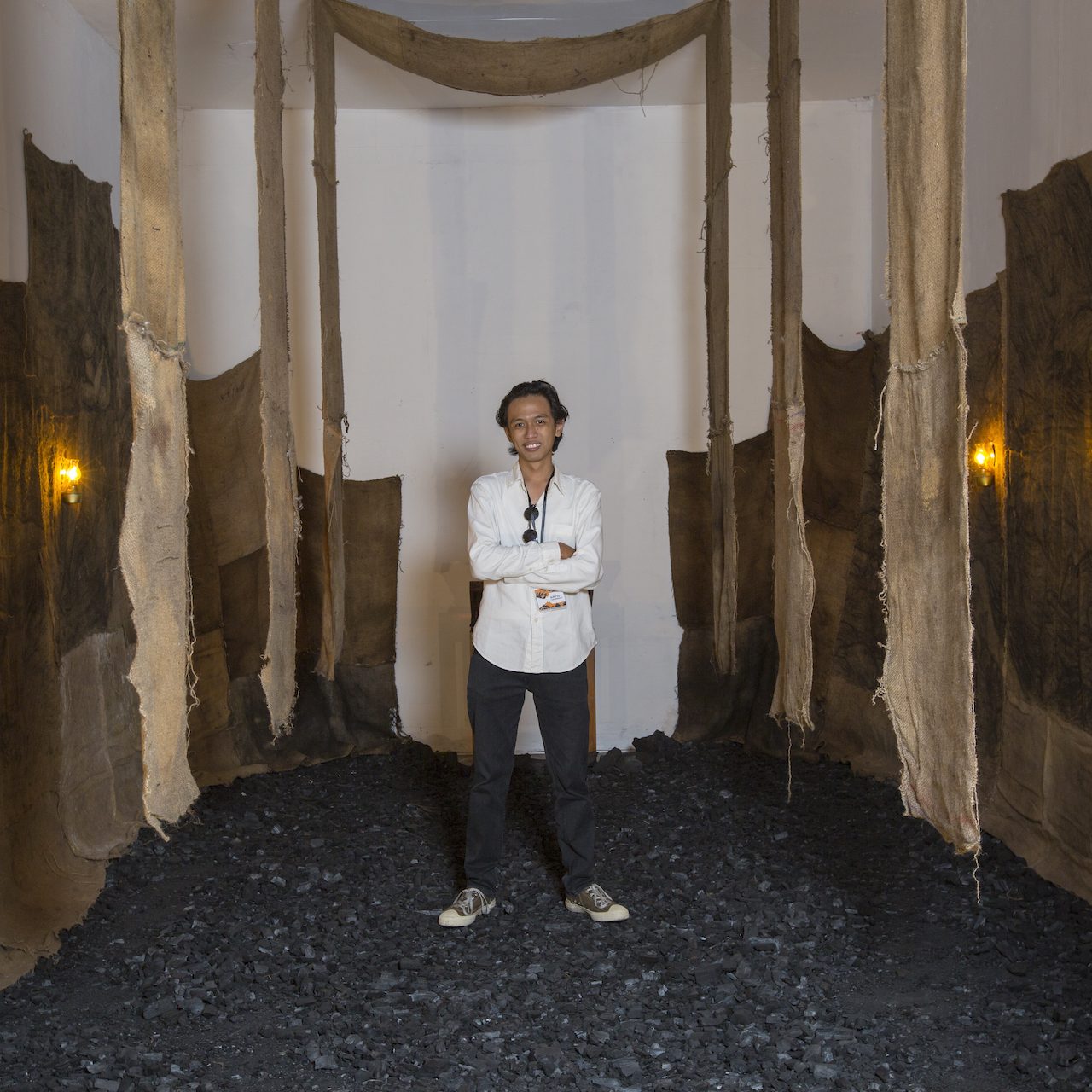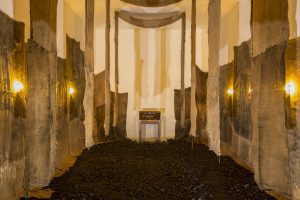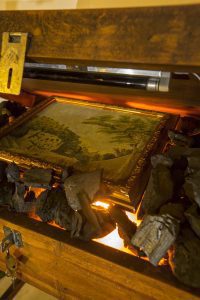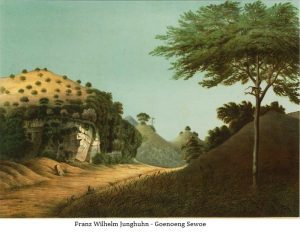Raden Kukuh Hermadi (Indonesia-Gunungkidul)
Raden Kukuh Hermadi (b. 1995 in Gunungkidul) graduated from a bachelor program of the Graphic Arts major, Department of Fine Arts, ISI Yogyakarta. Kukuh creates cross-media artworks and explores the mythical or historical narrative of Gunungkidul. In the future, he wants to experiment with combining graphic printing with electricity.
Kukuh has participated in exhibitions, namely “Platform Perupa Muda Biennale Jogja XV” at PKKH UGM (2019), “Paradox 2018” at Lawangwangi Creative Space, Bandung (2018), and “Bloom in Diversity” by ISI and ITB at Balai Banjar, Sangkring, Yogyakarta (2017). He also participated in several programs, including the “Shared Residence-Poklong Anading“ at ARTJOG MMXIX (2019), WORK (IN) TITLE: SILANG TEMPAT Residency program between the Faculty of Fine Arts of ISI Yogyakarta and the Faculty of Arts and Design of ITB, taking place in Bandung, as well as a joint exhibition with 40 nominees in “Re-Mitologisasi”, Basoeki Abdullah Art Award #3 Competition.
“THE DOOMSDAY OF THE LAND OF PARADISE” (2021)
Charcoal Installation, Charcoal on Burlap, Wooden Table, Painting, Sounds, and Lights with Timer
Variable size
“Matinya tanah Firdaus” reconstructs the narrative of the process of deforestation and rocky desertification in Gunungkidul, whose one of the causes is the massive use of charcoal as fuel. Charcoal is sold as fuel to meet local people’s daily needs. Such ecological impact culminated in a massive rat attack in the 1960s. Black charcoal and burlap with holes marked the said era, where many residents used burlap as clothing or foot protector during the rat attack. Those objects are juxtaposed with the replica of a painting by Junghuhn (a German botanist during the colonial era). The painting captured Gunungkidul as a beautiful area grown with forests.
The issue of land extraction and the perspective that sees forest or land as mere economic resources make the land conflicts more complicated. This incident is a consequence of the failed forest management by the Dutch East Indies government and the Yogyakarta Palace, as well as the contribution of the Gunungkidul community themselves. The problematic issues of building fences, land rights division by both the state and corporations, and how the grassroots react to such issues are inevitable, causing a shift from what Junghuhn portrayed as the Land of Paradise to a dead land.




